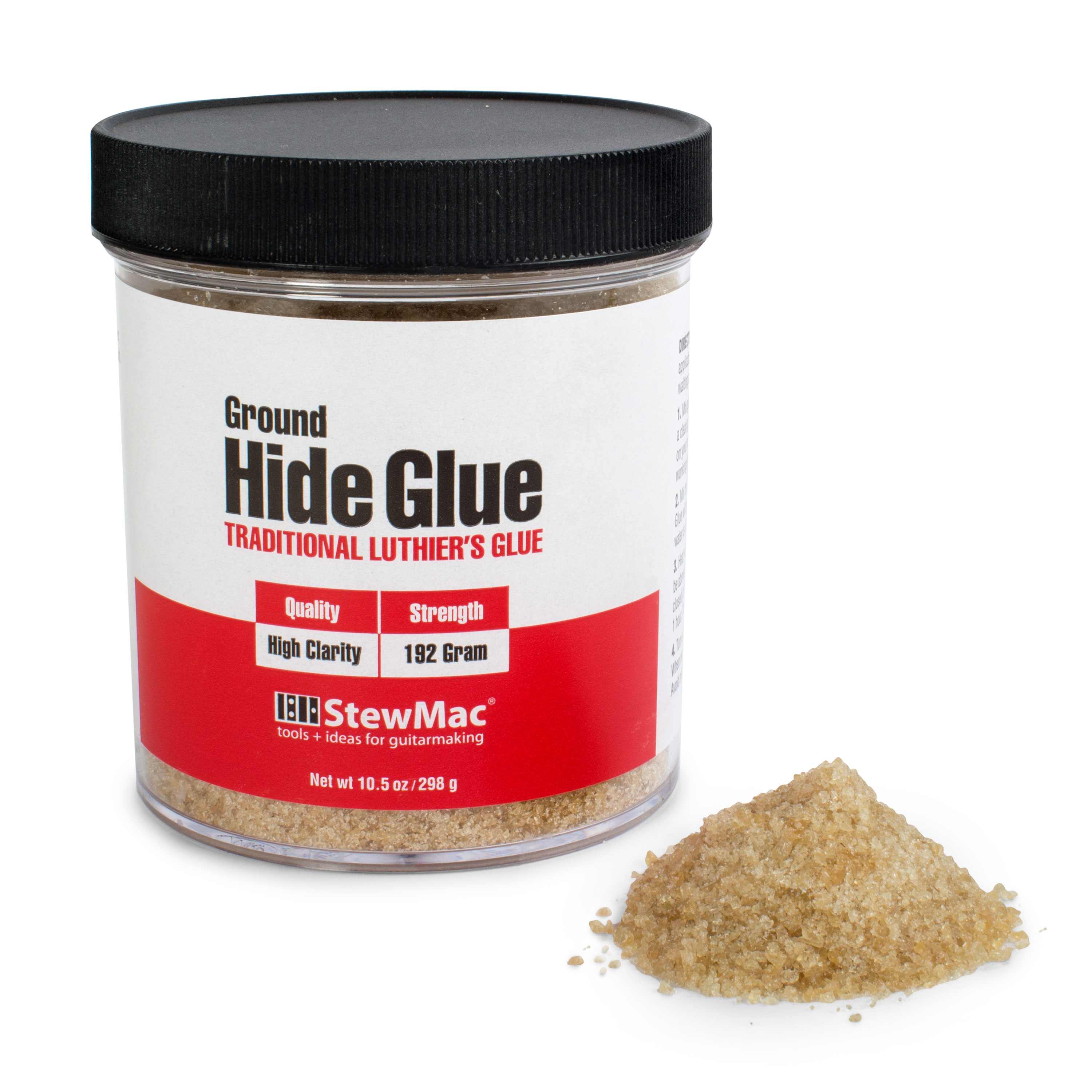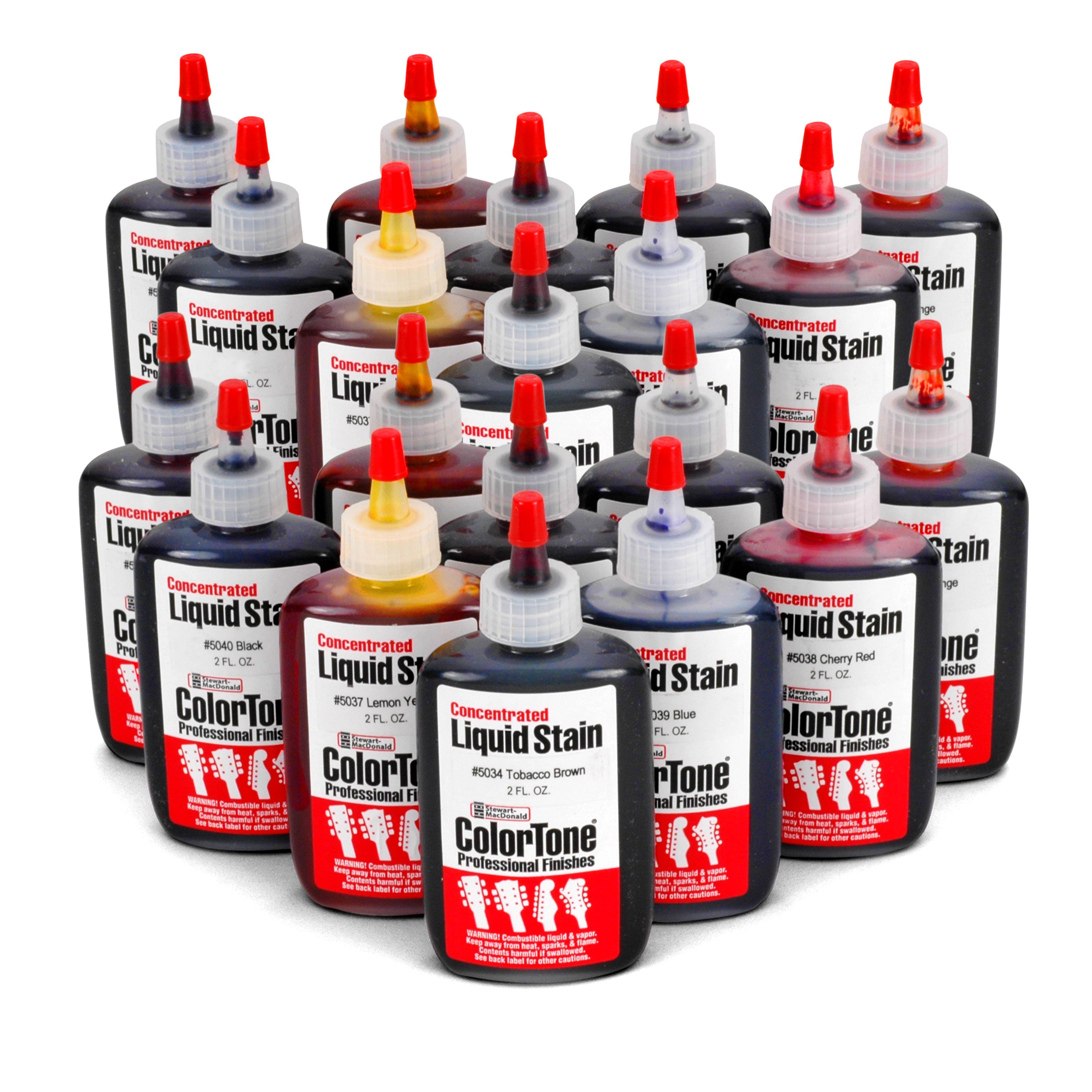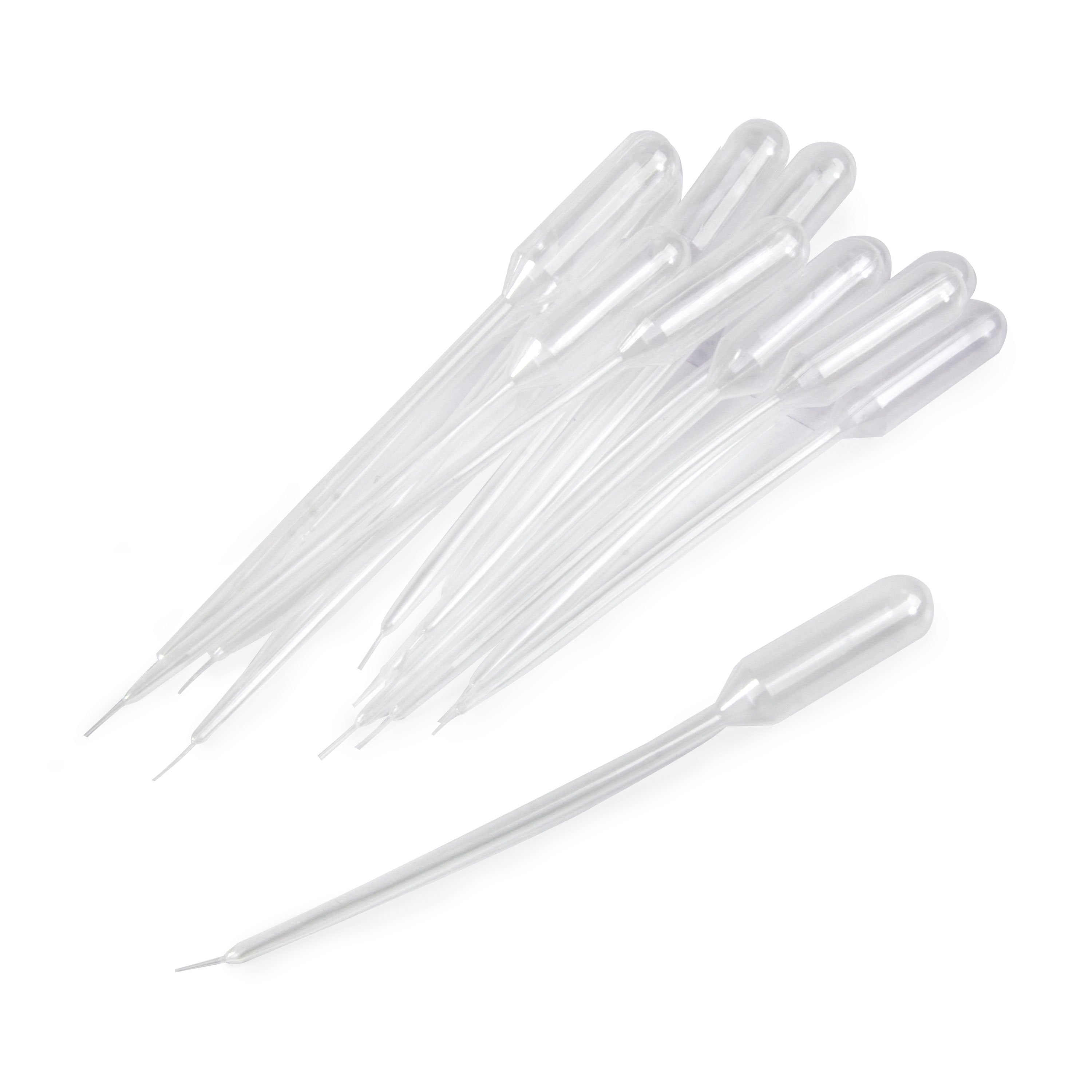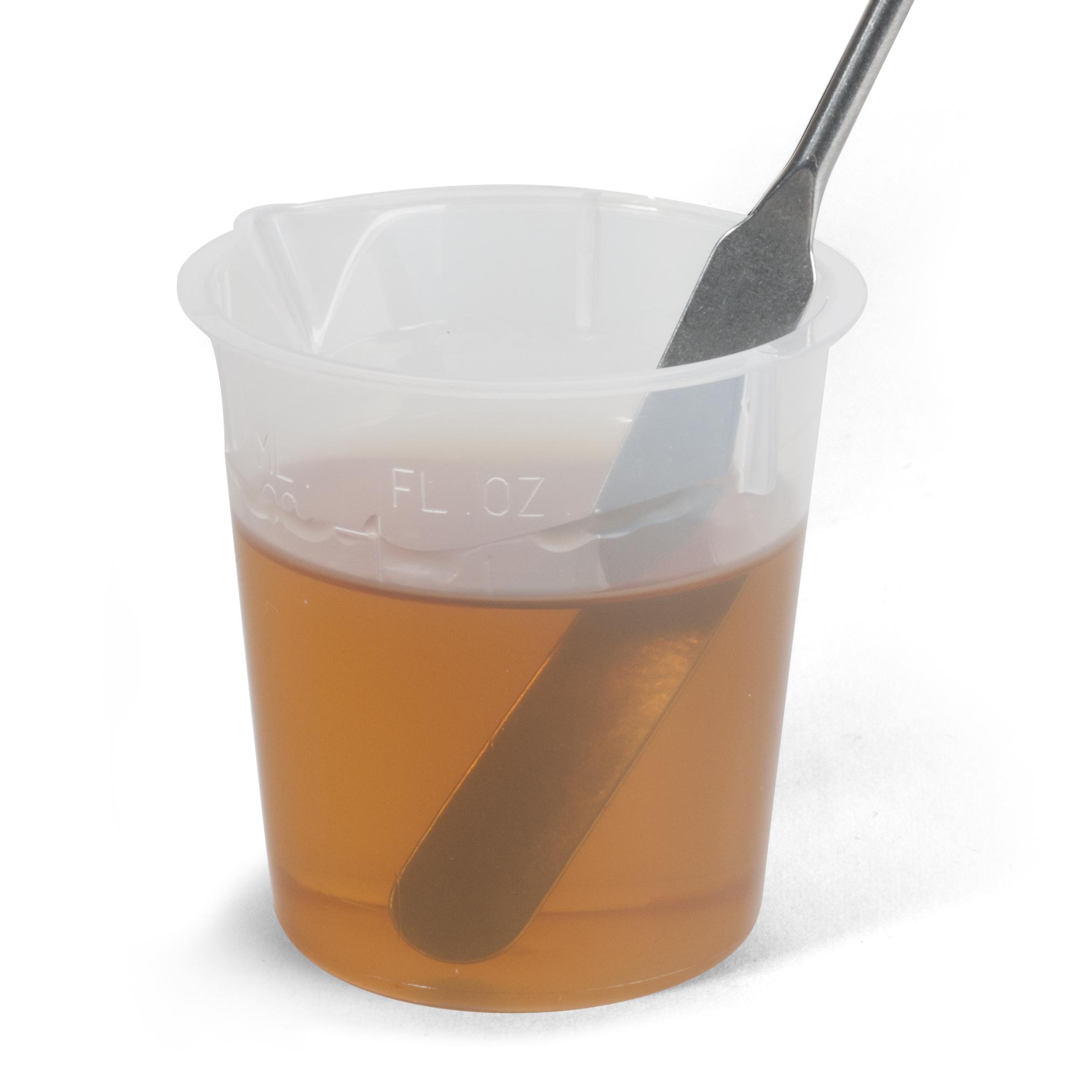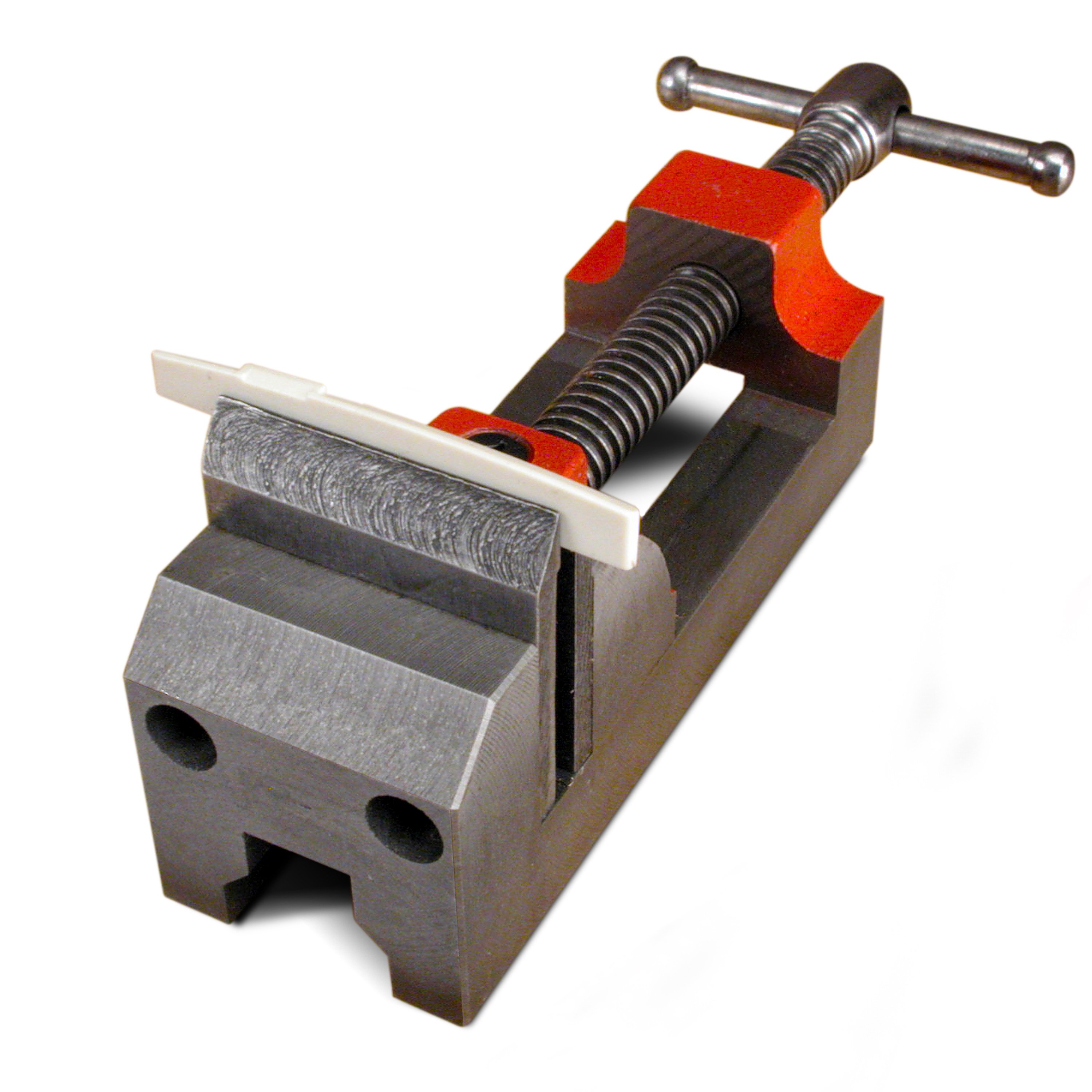Adding color to hide glue for an invisible repair
If you’re not familiar with hot hide glue, here’s a technique that might surprise you. And if you’re not already a hide glue user, I want to talk you into joining the club! And that’s fine with me. But at the neck joint there’s some damage and a gap where the binding has pulled away from the side. To repair this tiny area, I mixed hot hide glue and ColorTone stain to create a colored glue to match the surrounding finish. This way, the glue filled the gap and touched up the finish at the same time. That's handy! I didn't used to think of hide glue as handy. Before I started using an electric glue pot, I would heat a jar of glue in a pan of water on the kitchen stove. It was a hassle, so I didn’t use hide glue much. I was missing out on the best glue for about half of the work I do. Now that it’s right here by my bench, warmed up and ready to go, I use hide glue every day. A glue pot can hold way more glue than I need for instrument work, so instead of filling it with glue I fill it with water. The glue goes in a small jar sitting in the heated water, with plenty of room for my gluing tools: A repair magnet in the bottom of the mixing cup holds it to the glue jar. This anchors the lightweight cup, and it’s a convenient way to lift the glue from the hot water. I’m not painting with the glue, I’m just touching the glue-filled brush to the mandolin, using the drop-fill technique. I love being able to clean hide glue with hot water and a Q-tip. Even though it’s already started to set, I’m still able to clean it off the binding. In the morning it’ll be really hardened; then I’ll use sandpaper and an X-Acto blade to smooth away any rough spots. If more glue is needed, no problem: I’ll just warm up the leftover stained glue, melting it so it’s ready to use again. As a last step, I’ll brush a little fresh-mixed shellac over this repair. I predict you'll become a card-carrying member of the Hide Glue Club!
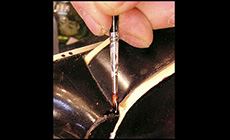
The finish on this old Gibson A-50 mandolin shows its age
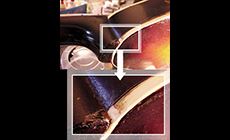
That was a mistake.
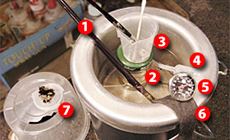
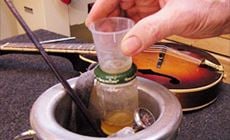
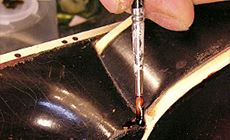

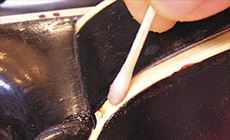
What’s so hot about hide glue?
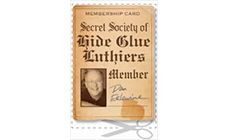
What about bottled hide glue?
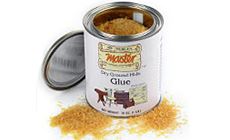
If that’s the way for you to give hide glue a try, go for it. But use it before the expiration date on the bottle: hide glue has to be fresh in order to cure properly. (I learned this the hard way on a Martin repair years ago!) Mixing your own in a glue pot’s the best way to go.
Hotter glue means more time to work
Here are a couple of ideas from Don MacRostie, head of StewMac’s R&D team. When Don wants some extra working time before his glue sets, he gets it extra hot (about 180°). This combined with warming the parts gives him that extra edge on getting successful glue joints.
With the glue in a Grey Poupon mustard jar, he made a tripod to hold it above his heat gun. This is for a quick start to the day. Rather than waiting for the electric pot to get the glue hot, this rig gets the glue to working temperature in 5 minutes.
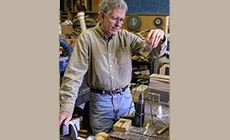
I made a miniature version of Don’s heater-upper: a small jar held over an alcohol lamp. A repair magnet holds the jar to a bent piece of steel in a vise.
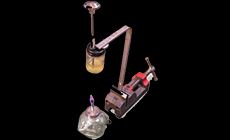
This gizmo brings the little bit of glue I'm working with up to speed in a jiffy! Then it goes into the glue pot and stays ready all day.
